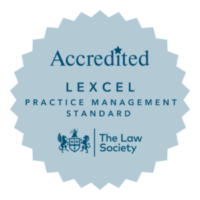Conveyancing: Types of property survey and why you should get one.
16th May 2024
There are four main reasons why you need to have a property surveyed:
- You wish to be sure that the price is realistic — you don’t want to over pay.
- You wish to know that the house does not have any defects that could lead to repairs or know what repairs you will need to carry out and budget for before you exchange Contracts and commit to the purchase.
- Your Mortgage Lender will insist on a Valuation before agreeing to how much to lend you.
- You wish to know how much to insure the house for. Generally the price of the house will be more than the insurance value (the cost of rebuilding).
What kind of survey do you need?
There are normally three levels of survey reports to choose from: –
1. Valuation Report
This is not a survey as such and is used only to establish the value of the property. It does not give any indication of the condition of the property. It is not for your peace of mind, it is normally for the use of a Mortgage Lender. Some Lenders will pay for the Valuation fee or refund it after Completion.
2. Homebuyers Report
This is a package designed specifically for homebuyers. It provides advice and information on: –
The general condition of the property.
- Any significant defects or matters which need urgent attention and advice on what to do about them.
- A valuation of the property — as it stands — and possible after any defects have been repaired (if applicable).
- A value for insurance purposes.
This type of survey will usually be slightly more expensive than a straight forward Valuation but is ideal for more modern properties. For older properties or where the property has defects that you are aware of, a building survey could be more appropriate. You should address any problems that are identified with a specialist or independent expert.
3. Building Survey (Structural Survey)
This is a more detailed report and is usually used for older, larger, dilapidated or unusual buildings such as thatched cottages or converted barns, listed buildings etc. It looks at all aspects of the property, including: –
- A comprehensive report on the construction of the building including materials used.
- A technical analysis of any significant defects and advice on what to do about them.
- Information on any other defects, general disrepair and shortcomings in the physical condition, maintenance and design of the building.
If a property has had any works such as underpinning/subsidence repairs you may wish to consider a Structural Engineers Report.
Ready to start your conveyancing journey?
Speak to one of our friendly and understanding new instructions team for a quote and free initial advice regarding your conveyancing need. In a hurry? Why not try our free instant online quote calculator.
CLICK HERE FOR A FREE INSTANT QUOTE
Want to find out more first?
We have a wealth of information about the conveyancing process whether you are a seasoned pro or taking your first step onto the housing ladder. The best place to start would be at our Residential Conveyancing pages, which can be found here:-
TAKE ME TO THE RESIDENTIAL CONVEYACING PAGES
Alternatively, contact us via our website, email or telephone. All of our details can he found here.
Related news
Articles you may find useful
Like this article? Sign up for our regular newsletters






